Legendary cartoonist and Mad Magazine founder Harvey Kurtzman left behind a legacy of unfinished work when he passed in 1993 – including a grand, unfinished graphic novel adaptation of Charles Dickens’ A Christmas Carol. Now, 60 years after Kurtzman first planned to illustrate the series, it’s finally being finished and released.
Images: Harvey Kurtzman/Gideon Kendall/Comixology. Gif by Andrew Liszewski.
Published exclusively through Comixology this week, Marley’s Ghost features new art from Gideon Kendall, inspired by Kurtzman’s classic style and built upon his own original notes and storyboarding, with new dialogue written by Josh O’Neill and Shannon Wheeler. It’s the chance to see Kurtzman’s earliest plans for A Christmas Carol finally come to life.

We are proud to exclusively present insight from Gideon Kendall about how he went about recreating just one page of Kurtzman’s breakdowns for Marley’s Ghost – how it went every step of the way, as you can see in the gif below, from storyboards to the final page in the actual book. Kendall’s words follow these images.
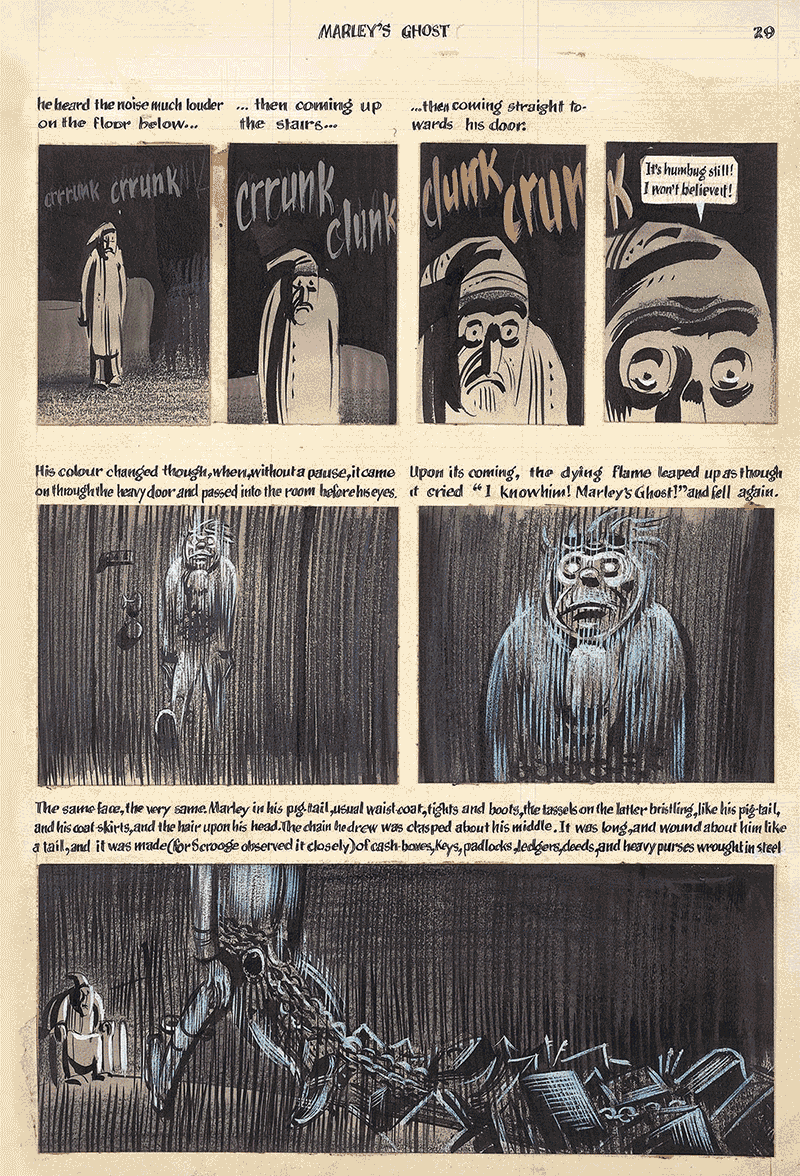
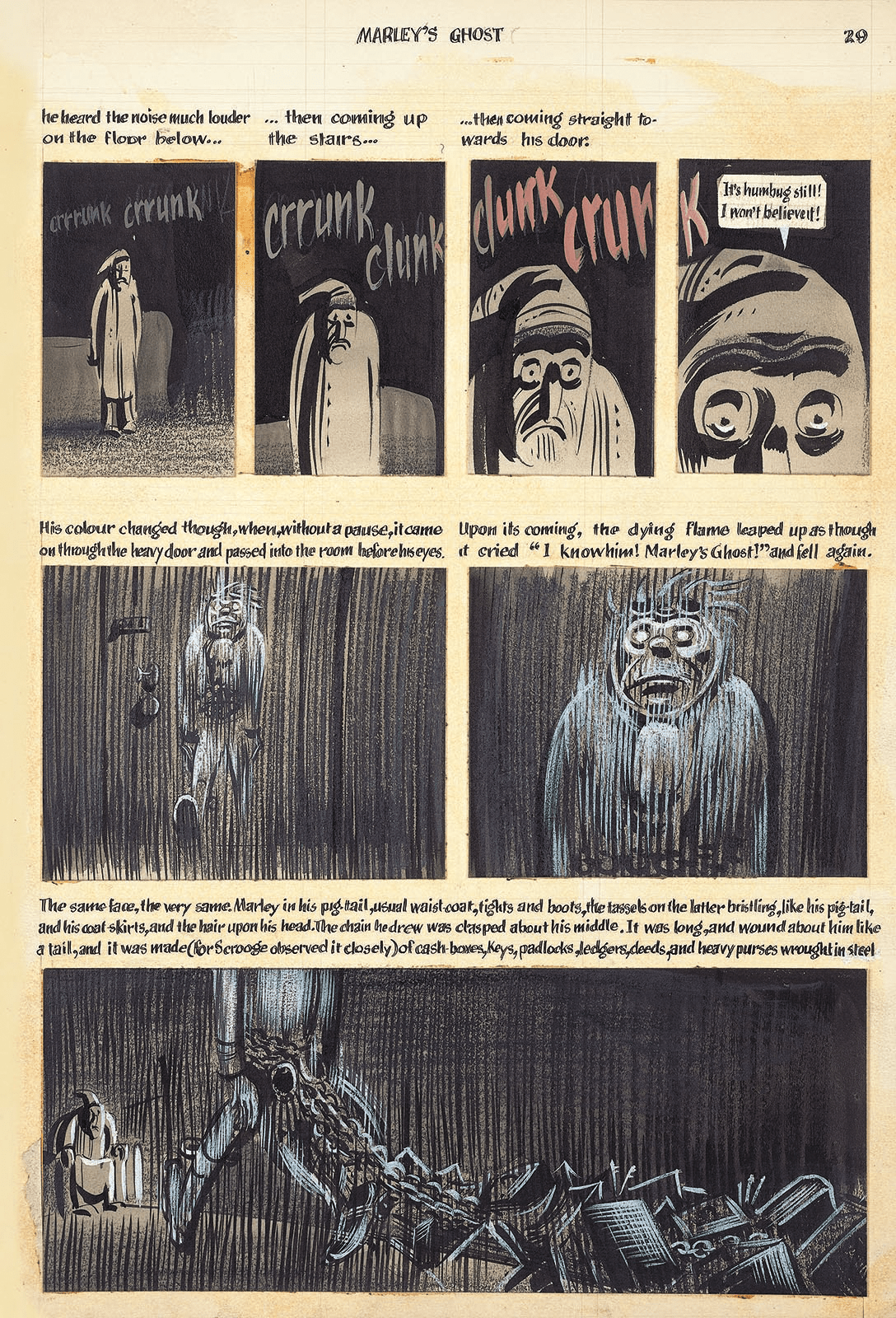
Kurtzman’s Original Art
Jeez – what can you say? Dickens, Kurtzman… those guys knew how to tell a story. All the creepy intensity and subtle humour of Dickens’ original scene is on full display here. You can feel the American artist’s admiration for the British bard. They’re a perfect match for each other and Harvey is clearly having a blast translating the classic story into a modern medium.
But as much as I’d like to, I can’t just sit here admiring the masters’ handiwork. I have to do my job and turn this into a completed graphic novel. As soon as I start thinking about the task at hand, I start to panic. How do I remain true to the material, while also finding a way to inject my own voice into the project?
HK only thumbed out about 50 pages, and most of them are very rough. Eventually I know I’m going to have to make this my own. But here in the early part of the book, every time I deviate from Kurtzman’s roughs, I’m riddled with self doubt. Am I changing things to make the story better? Or am I just changing things to try and wriggle out of Harvey’s long shadow? And what are all the devoted Kurtzman fans out there going to say? I can just imagine the vicious comment threads! Out of all the experienced, qualified and super-talented cartoonists out there, how did they pick THIS guy? Who the hell am I to try and walk in the shoes of a legend?
Ugh! Better not to think about it. Better just to start drawing…
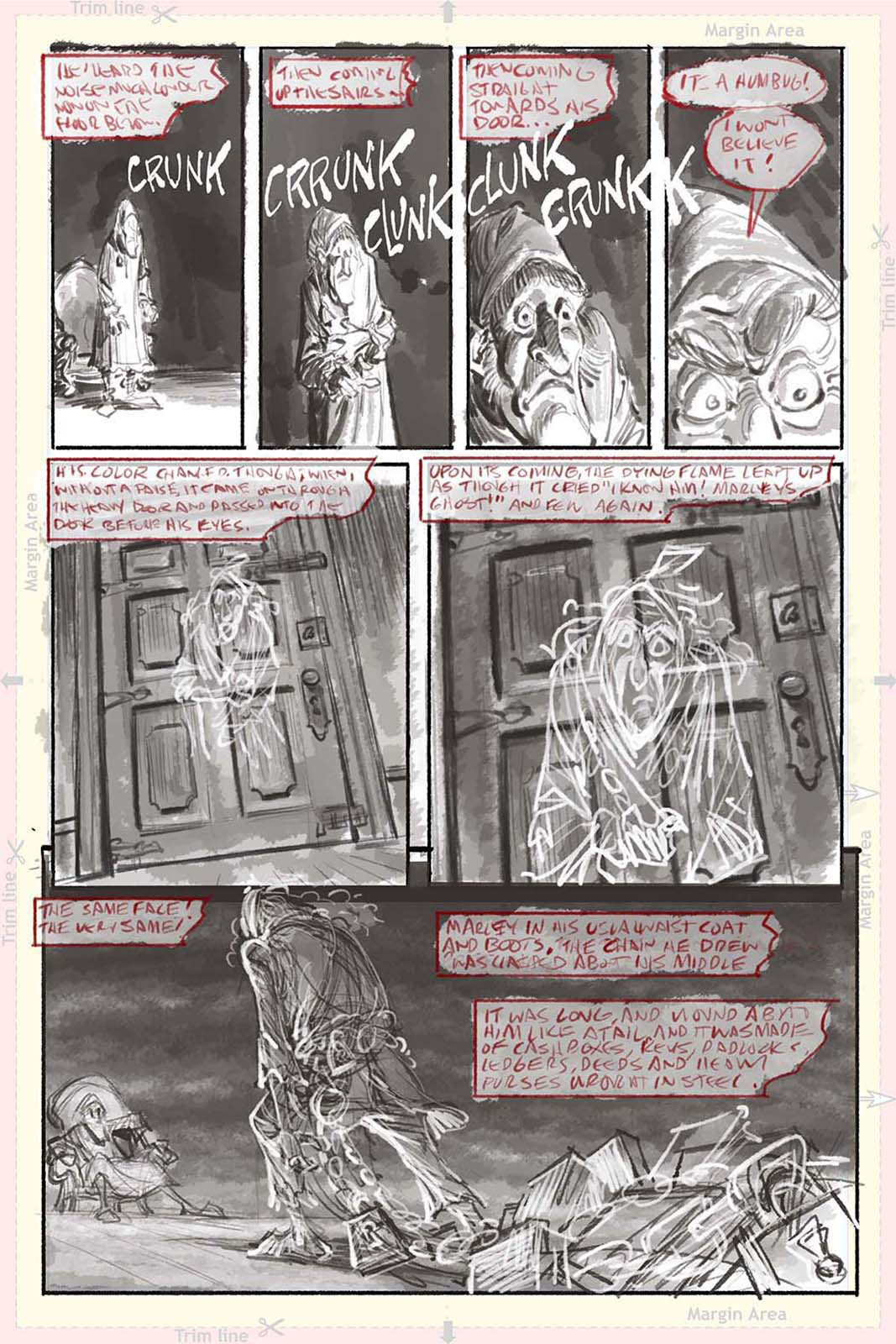
Pencils
I ended up staying pretty true to the original layouts on this page. And why not? They’re cartooning gold. I did do a little tinkering. For instance, I made the perspective more dramatic in the middle panels. I felt that after zooming in to Scrooge’s eyes on the top row, and in the bottom panel having Scrooge sinking desperately towards the floor in terror, it would make sense to have the camera looking up at Marley in the middle panels, as if we were seeing through Scrooge’s eyes.
If I can indulge in a little criticism of a cartooning genius, I think that Harvey’s figures on this page are a little stiff. Normally his drawings of people are bursting with movement and life, but here they’re somewhat inert. So I tried to make the figures here more fluid, less balanced, more contrapposto (if you’ll forgive some fancy art terminology).
For the first several pages of the book Scrooge is wearing a typical Victorian men’s suit with overcoat, Inverness cape and top hat. It isn’t until page 15 that he changes into the nightgown that he continues to wear until nearly the end of the story. It was at about this point, while trying to draw Scrooge hunched over in his chair at the bottom of this page, that I came to the realisation that there was no way I could draw 100-plus pages of a guy running around in a nightgown without having some reference materials to work with. I couldn’t convincingly fake what wind and gravity and motion would do to the flaps and folds of such an outfit. I needed a model and I needed a real nightgown.
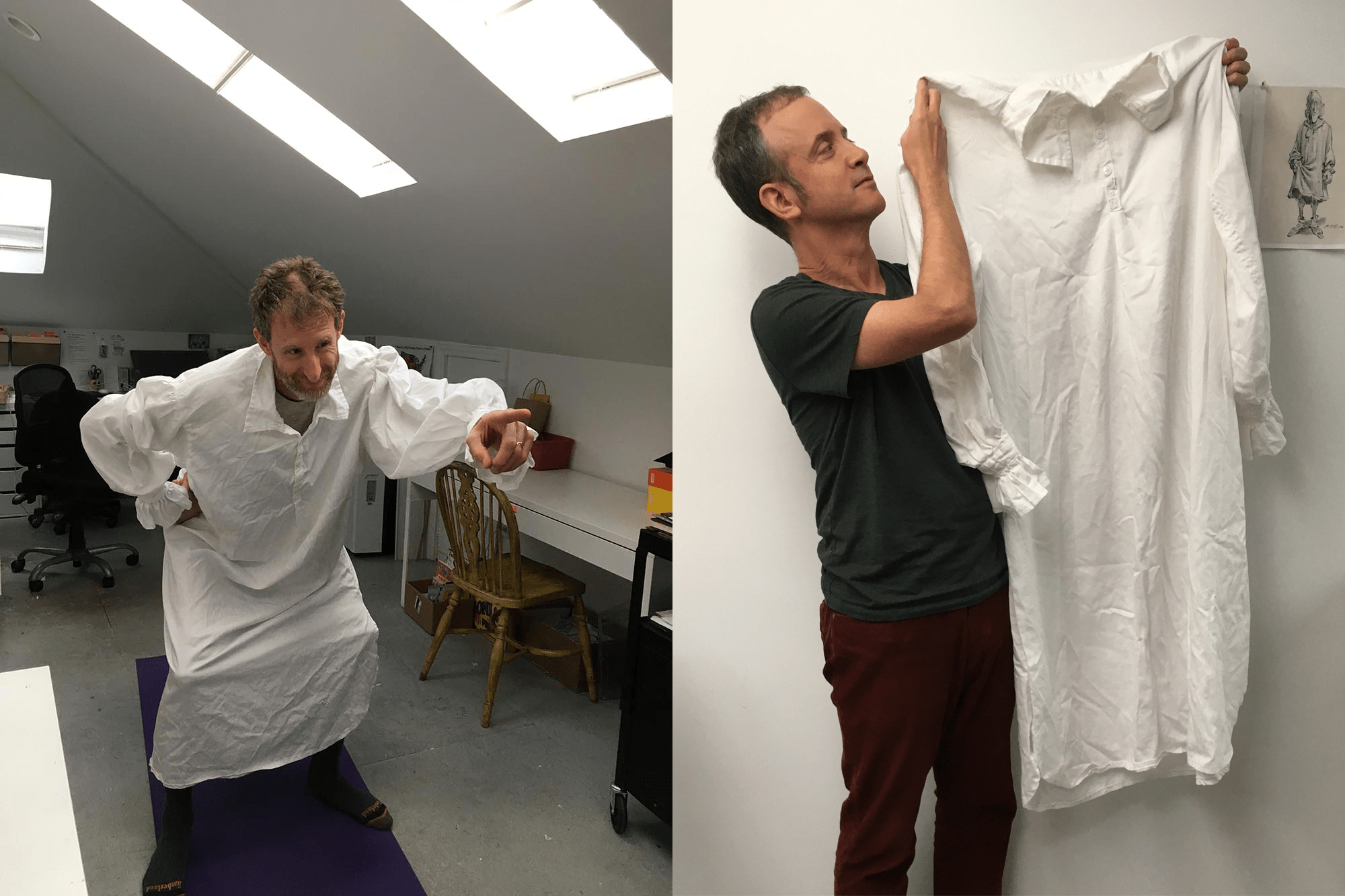
Gideon’s reference image of Lucas (left) and Gideon holding the comissioned gown himself (right). Images: Gideon Kendall
The model was the easy part. Fortunately, my friend Lucas was willing to help me out. At 6’3″ [1.9m], with a prominent nose and chin and approximately zero per cent body fat, he fit my image of Scrooge perfectly. The nightgown was another matter. It turns out that for some reason Old Navy does not sell authentic Victorian nightgowns for very tall men. Nor does Amazon. Or anyone. So I had to have one made. A very talented seamstress by the name of Lynda Milliron made one for me. She made it from scratch and did an amazing job. So now, with this project finished, I remain the proud owner of a nightgown for a man approximately three times my height.
One thing I always struggle with in laying out a comics page is leaving enough room for text. So I went ahead and blocked in the boxes and balloons at the sketch stage to ensure that I didn’t get into trouble later on. Looking at the result, one thing became abundantly clear to me and the writers. We were going to have to greatly reduce the amount of text. Kurtzman’s roughs contained a huge amount of the original manuscript, but we decided that this was not a tenable solution for a graphic novel. The pictures should be allowed to tell as much of the story as possible and we felt that if HK had continued with the project he would have likely come to the same conclusion.
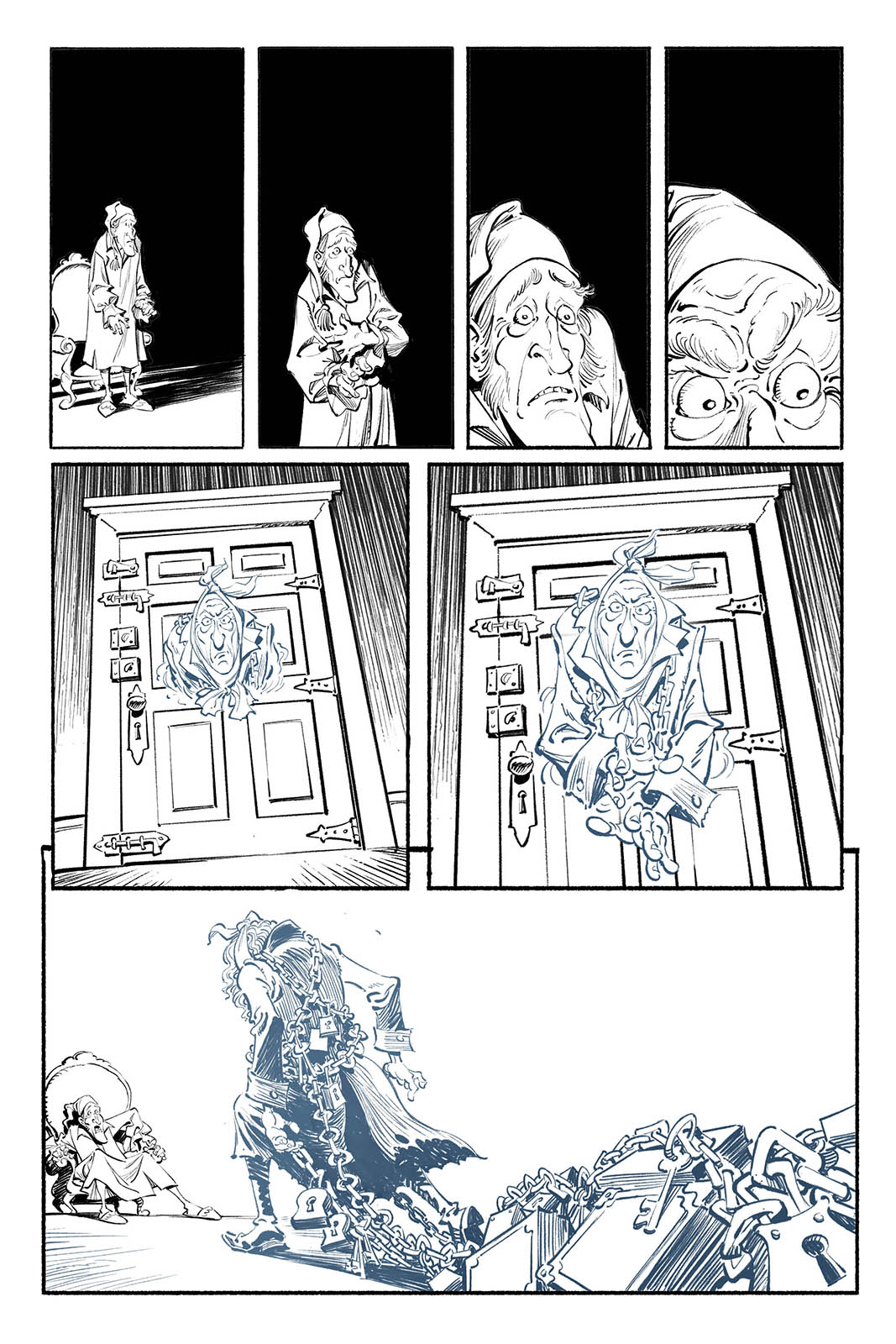
Ink
That sinking feeling when you go from the liveliness and endless possibility of sketching to the clarity – but also the snuffing out of endless possibilities – that inking results in. Inking is also where you are forced to deal with all the things that you can procrastinate on in the sketch stage (at least if you’re your own inker): What exactly do Victorian era padlocks, cash boxes and door latches look like? Exactly how long are Scrooge’s sideburns going to be? How many top hats, bustles and tailcoats will I draw before I go completely insane?
I wanted to make sure that each ghost was given a distinct graphic treatment. For Marley, I inked him with a grayish blue on a separate layer, set to “multiply”. For the inking – which, like all the post-Kurtzman stages of the art, was done digitally – I primarily used two custom Photoshop brushes. For generally thicker and more sweeping lines, such as clothing and atmospherics, I used the Kyle Webster rough inking brush. For face details and architectural elements I used a brush I made myself which is basically a chisel shape with pressure sensitivity and some scatter to mimic a slight ink bleed.
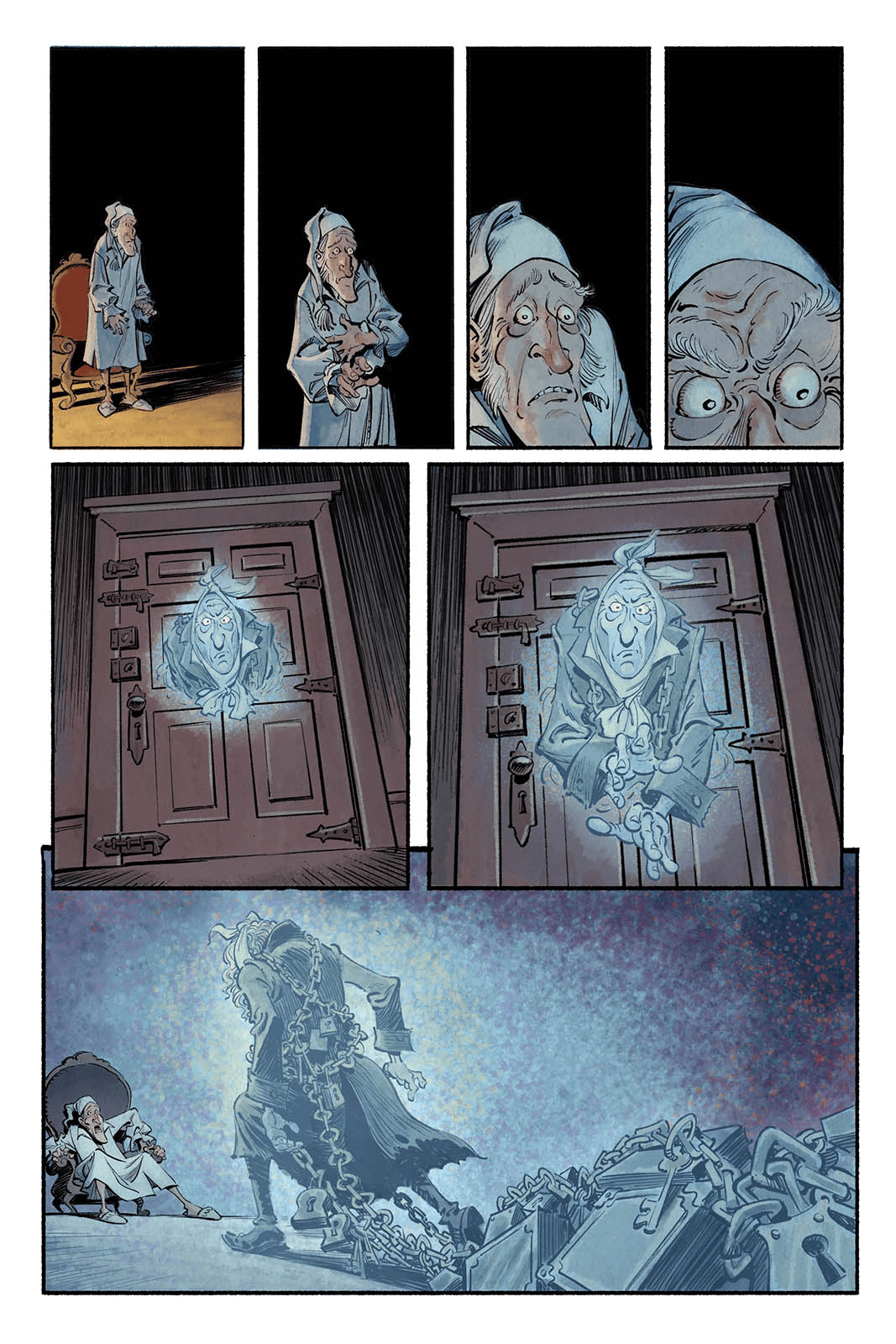
Colour
Ah, now we can reintroduce some of the depth and atmosphere that we lost when going from sketching to inkline. You can also hide a lot of the mistakes you made in your inking!
Things also get more complicated. In the previous pages, the scene was lit by the orange glow of the fireplace. But now the light source is changing. In the top panels I’m attempting to gradually transition from the orange to the blue light, thereby implying the off-camera form of Marley beginning to emerge. By the bottom panel, the room is fully bathed in his ghostly blue glow, as it will be for the remainder of the chapter.
A note on digital colour, and digital in general: Although this entire book was done digitally, I tried my best to give the final art as much of an analogue feel as possible. I’m an old school guy. Harvey and Dickens were too. So I endeavoured to give the colour as much of an organic, water-colour sort of feel as I could. I limited the number of colour layers to one or two, and I let little imperfections remain in order to avoid that cold smoothness that digital colour often has.
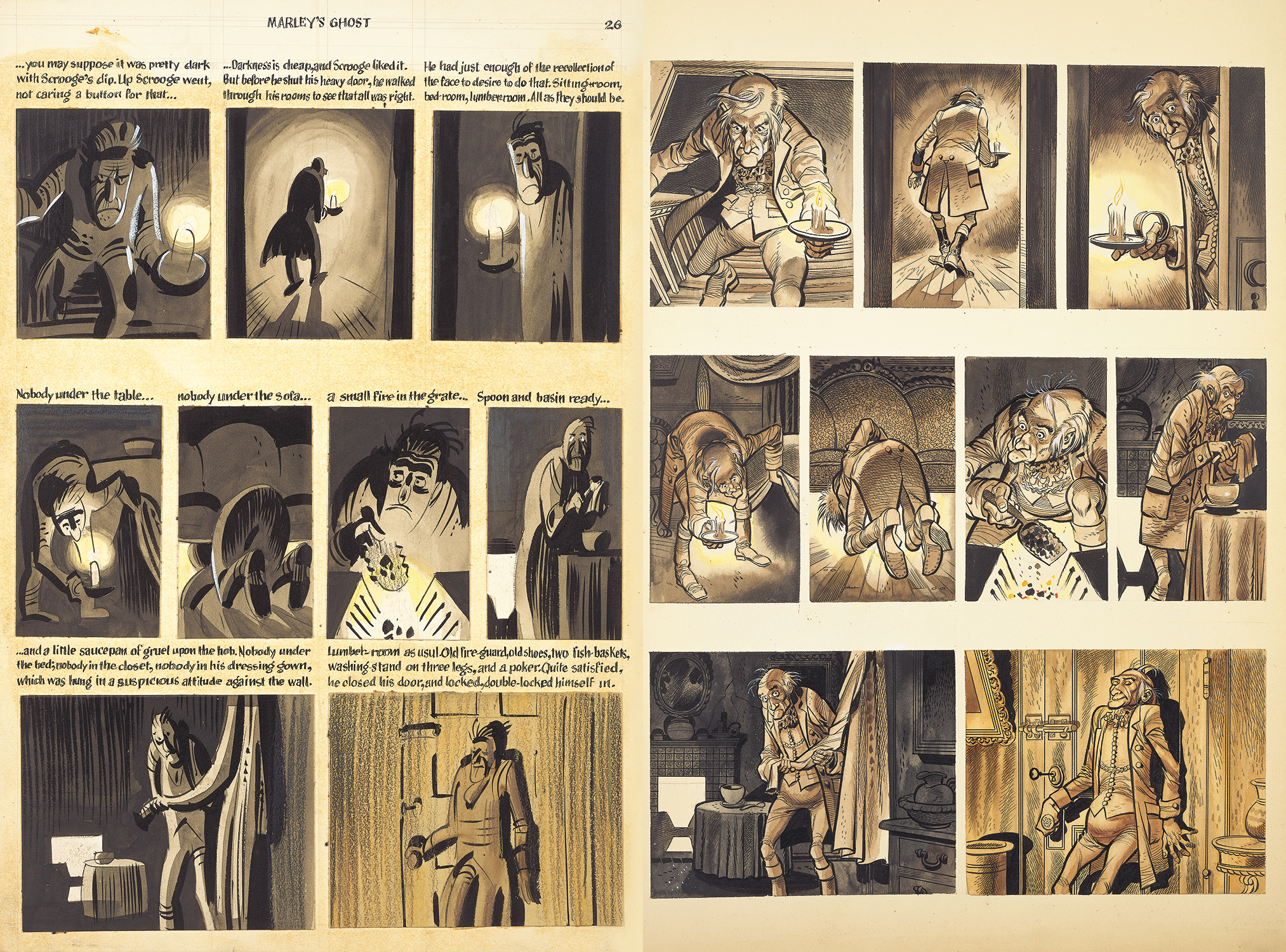
Kurtzman’s original storyboard (left) and Jack Davis’ sample page (right) Images: Comixology.
For brushes I used mostly a few custom-made watercolour settings, and for atmospherics the Kyle Webster splatter brushes came in handy. I strove to bring a classic old-fashioned look not just to the colour, but to the book as a whole. Kurtzman had envisioned Jack Davis as a possible artist for the project (he even commissioned him to do a gorgeous sample page), and Davis, along with other classic Mad artists, was an obvious inspiration for the project. I also spent a lot of time looking at older, pre-comics artists such as Dickens’ contemporary Gustav Dore, whose engravings have become what most people see in their mind’s eye when they picture Victorian London, and Kathe Kollwitz whose images of the poor and downtrodden share a similar conscience with Dickens. I also borrowed heavily from Daumier, whose satirical lithographs of 19th century life made him sort of a one-man Mad Magazine of his day.
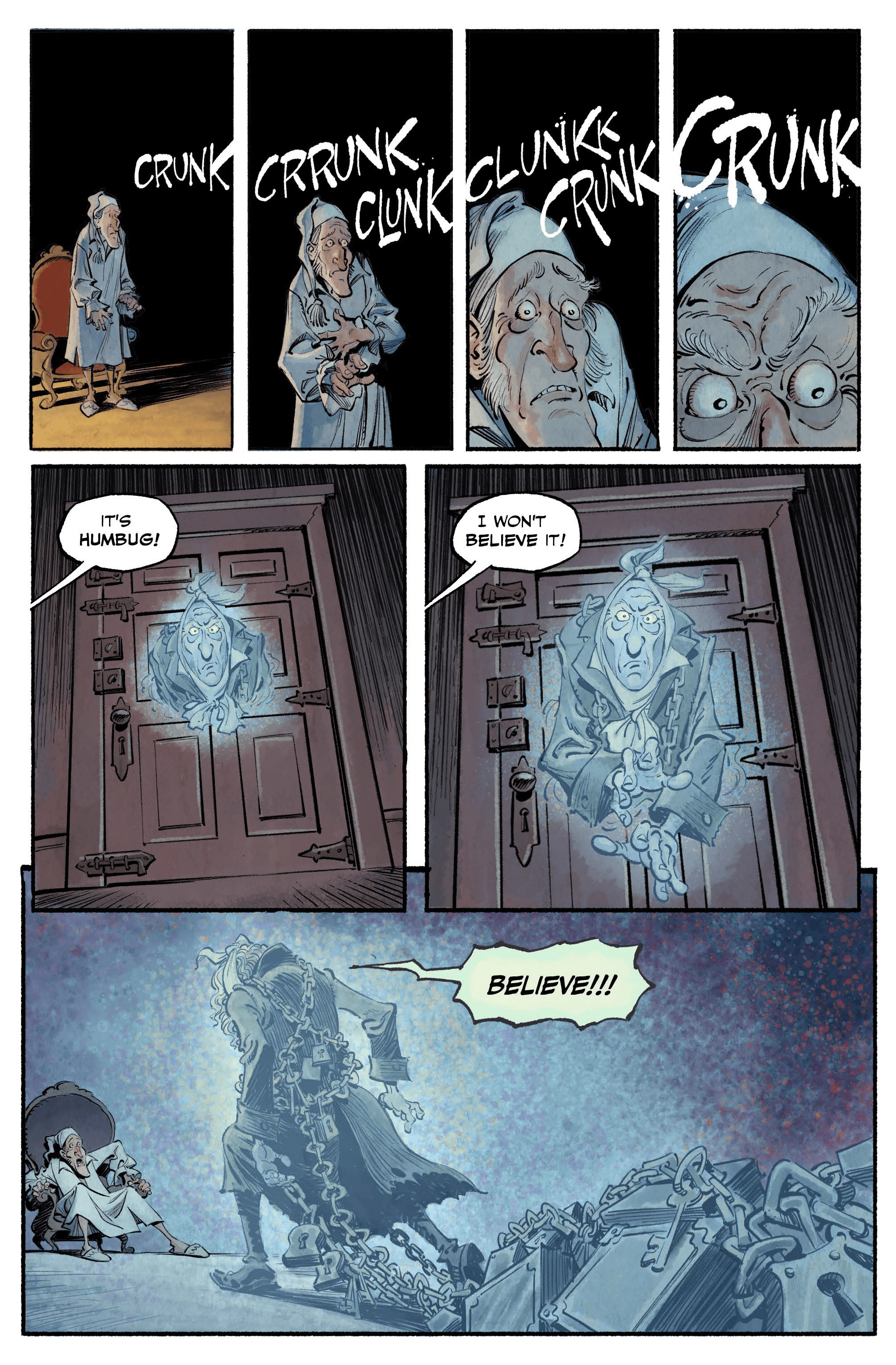
Lettering
As I mentioned, our goal was to reduce the text as much as possible while retaining a good portion of Dickens’ inimitable pathos and wit. At one point we had reduced the text on this page to only Scrooge’s trademark “Humbug!” – but we decided that a completely silent Marley seemed too passive, and came up with the text as you see it here.
Up until this project, I had always hand-lettered my comics. At first I was uncomfortable switching to a digital font – but once I found Hush-Hush (ComicCraft), with its combination of a classic comic book style and ever-so-slightly Gothic elegance, I was very happy. I drew the word balloons and text boxes by hand. I’ve never liked vector-based word balloons. I think they create a barrier between the reader and the art, and would have been far too slick for this project in particular.
So that’s a summary, with perhaps too many asides, of how we went from the Master’s instructions to the final product. In one sense, the book became easier once Kurtzman’s layouts ended. The pressure of trying to do right by him eased up a little. I stopped having nightmares about Harvey yelling at me for deviating too far from his compositions, and I was free to tell the story more or less in my own manner.
But without the work he did in these early pages, I would have been lost at sea. They were the guidebook I needed in order to navigate the winding back alleys of Victorian London. They were the loving shove of a father as he sends his child careening down the hill on their first bike, training wheels only recently removed. His pages provided the framework upon which I based the storytelling, the mood, the very heart and soul of the entire book. And no one ever laid a better foundation for a story, or for the entirety of modern comics itself, than Harvey Kurtzman (Well, except maybe Will Eisner. Whoever finds Eisner’s unfinished version of Huck Finn, look me up!)
I hope that Harvey would be proud. That’s a hope I’ll hold onto, until that dark and dismal night when his ghost appears and tells me otherwise.
Marley’s Ghost is available exclusively on Comixology now.
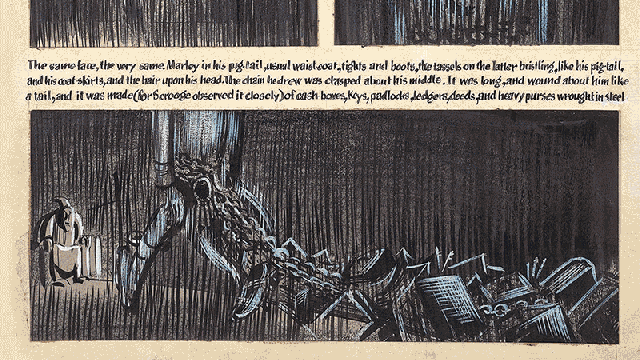
Comments